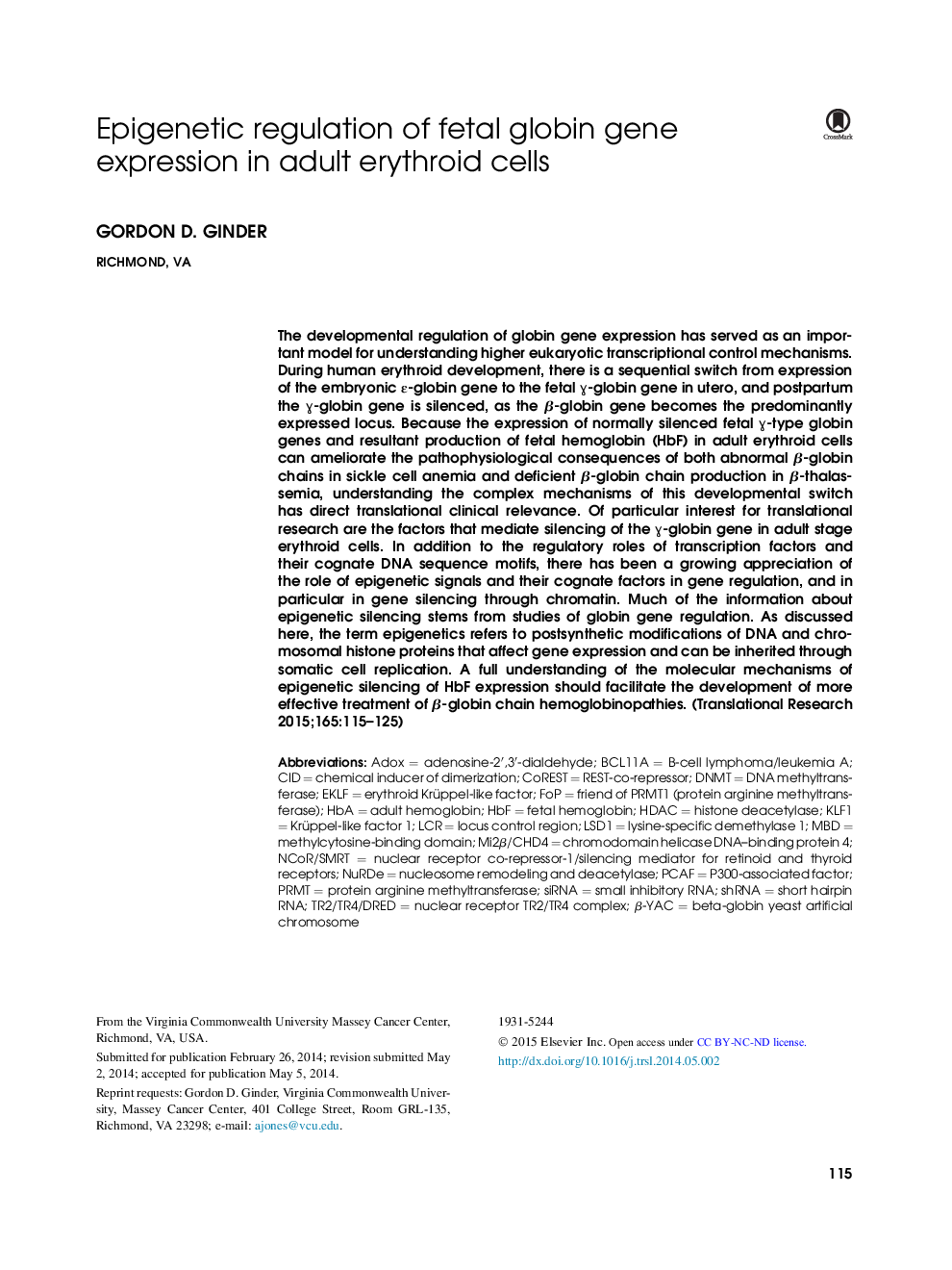| Article ID | Journal | Published Year | Pages | File Type |
|---|---|---|---|---|
| 6156131 | Translational Research | 2015 | 11 Pages |
The developmental regulation of globin gene expression has served as an important model for understanding higher eukaryotic transcriptional control mechanisms. During human erythroid development, there is a sequential switch from expression of the embryonic ε-globin gene to the fetal ɣ-globin gene in utero, and postpartum the ɣ-globin gene is silenced, as the β-globin gene becomes the predominantly expressed locus. Because the expression of normally silenced fetal ɣ-type globin genes and resultant production of fetal hemoglobin (HbF) in adult erythroid cells can ameliorate the pathophysiological consequences of both abnormal β-globin chains in sickle cell anemia and deficient β-globin chain production in β-thalassemia, understanding the complex mechanisms of this developmental switch has direct translational clinical relevance. Of particular interest for translational research are the factors that mediate silencing of the ɣ-globin gene in adult stage erythroid cells. In addition to the regulatory roles of transcription factors and their cognate DNA sequence motifs, there has been a growing appreciation of the role of epigenetic signals and their cognate factors in gene regulation, and in particular in gene silencing through chromatin. Much of the information about epigenetic silencing stems from studies of globin gene regulation. As discussed here, the term epigenetics refers to postsynthetic modifications of DNA and chromosomal histone proteins that affect gene expression and can be inherited through somatic cell replication. A full understanding of the molecular mechanisms of epigenetic silencing of HbF expression should facilitate the development of more effective treatment of β-globin chain hemoglobinopathies.
